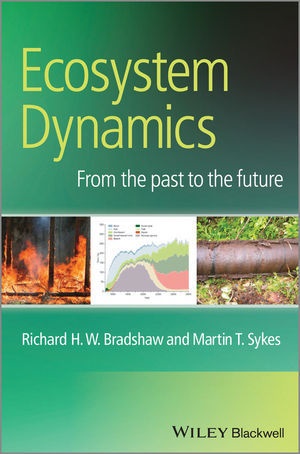Ulteriori informazioni
Informationen zum Autor Richard H.W. Bradshaw School of Environmental Sciences, University of Liverpool, Liverpool, UK Martin T. Sykes Physical Geography and Ecosystem Science, Lund University, Sweden Klappentext Ecosystem Dynamics focuses on long-term terrestrial ecosystems and their changing relationships with human societies. The unique aspect of this text is the long-time scale under consideration as data and insights from the last 10,000 years are used to place present-day ecosystem status into a temporal perspective and to test models that generate forecasts of future conditions. Descriptions and assessments of some of the current modelling tools that are used, along with their uncertainties and assumptions, are an important feature of this book. An overarching theme explores the dynamic interactions between human societies and ecosystem functioning and services.This book is authoritative but accessible and provides a useful background for all students, practitioners, and researchers interested in the subject. Zusammenfassung Ecosystem Dynamics focuses on long-term terrestrial ecosystems and their changing relationships with human societies. Inhaltsverzeichnis Acknowledgements ix About the companion website xi 1 Where Are We and How Did We Arrive Here? 1 1.1 Why this book? 1 1.2 Ecosystems in crisis 2 1.3 Relevance of the past 5 1.4 Forecasting the future 7 1.5 Chapter details and logic 9 1.6 For whom is the book intended? 12 1.7 Four key questions and the links to policy 13 2 Modelling 15 2.1 Introduction 15 2.1.1 How did these models develop? 16 2.1.2 Climate data, climate and earth system models 16 2.2 Background ecosystem, vegetation and species models 18 2.2.1 Vegetation models 18 2.2.2 Species-level modelling 25 2.2.3 Equilibrium physiologically-based modelling of species 27 2.2.4 Statistical equilibrium modelling of species 30 2.2.5 Some uncertainties and assumptions that apply generally to bioclimatic models 31 2.2.6 Models of intermediate complexity 32 2.2.7 Biogeochemistry integrated into equilibrium biome models 33 2.2.8 Integrating biome and NPP models 35 2.3 Dynamic modelling 36 2.3.1 Local to landscape scales: forest gap modelling 36 2.3.2 Regional to global scales: dynamic global vegetation modelling 38 2.4 Integrating models 44 2.4.1 Earth system models 44 2.4.2 Integrated assessment models 45 2.4.3 Agent-based models 48 2.5 Further reading 48 3 Data 49 3.1 Introduction 49 3.2 Which data are relevant? 50 3.3 Ecosystem dynamics: direct observation 51 3.3.1 Phenology 51 3.3.2 Biological monitoring 53 3.4 Ecosystem dynamics: indirect measurement or proxy data 56 3.4.1 Historical ecology 57 3.4.2 Palaeoecology 58 3.4.3 Pollen analysis 60 3.4.4 Charcoal and fire scars 63 3.5 Drivers of ecosystem dynamics 67 3.5.1 Palaeoclimates and greenhouse gases 67 3.5.2 Human impact on ecosystem dynamics 69 3.6 Databases 70 3.7 Gaps in available data and approaches 70 4 Climate Change and Millennial Ecosystem Dynamics: A Complex Relationship 73 4.1 Introduction 73 4.2 Reconstructing climate from biological data 74 4.3 The very long records of vegetation dynamics 78 4.4 Holocene records 81 4.5 Modelling of Holocene vegetation dynamics to help understand pollen data 83 4.5.1 Climate or people? The Tilia-Fagus transition in Draved Forest, Denmark 86 4.5.2 Climate or migration biology? The late-Holocene spread of Picea into southern Fennoscandia 87 4.5.3 Fagus in Europe 91 4.6 Simulating Fennoscandian Holocene forest dynamics 94 4.6....

